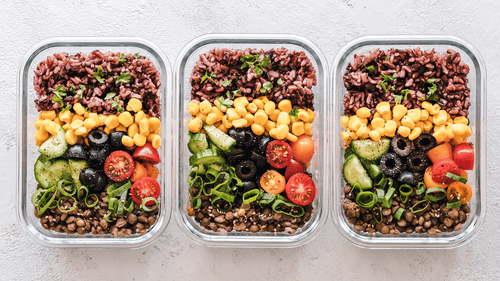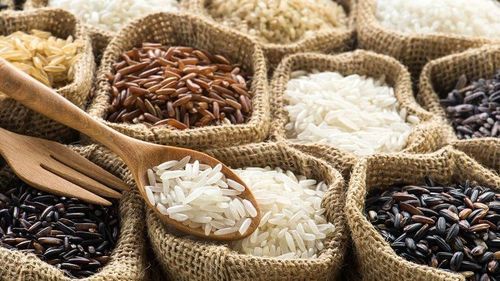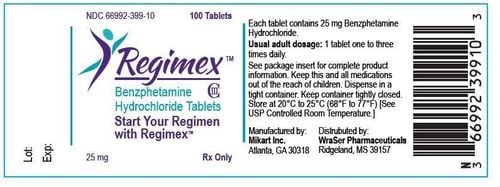This is an automatically translated article.
Brown rice and white rice are both foods that contain many essential nutrients, which are very good for health. However, each type of rice has different nutritional components and health benefits. Therefore, depending on the purpose of use and nutrition of each person to make the right choice.
1. Compare brown rice and white rice
White rice is rice obtained after the milling process has removed the husk, bran and germ. While this can help increase the shelf life of white rice, it inadvertently loses many important nutrients, such as fiber, minerals and vitamins. In addition, this refined rice is also polished to make the white rice grain brighter and more attractive.
As for brown rice, this is a whole grain, after the milling process, only the outer shell is removed and the bran and germ layer remains. As a result, brown rice often contains more nutrients than white rice, including fiber, magnesium, iron, thiamine and zinc. Furthermore, the GI (glycemic index) level of brown rice is also lower than that of white rice. According to nutritionists, consuming brown rice can reduce blood cholesterol levels, along with several risk factors for heart disease, stroke and type 2 diabetes.
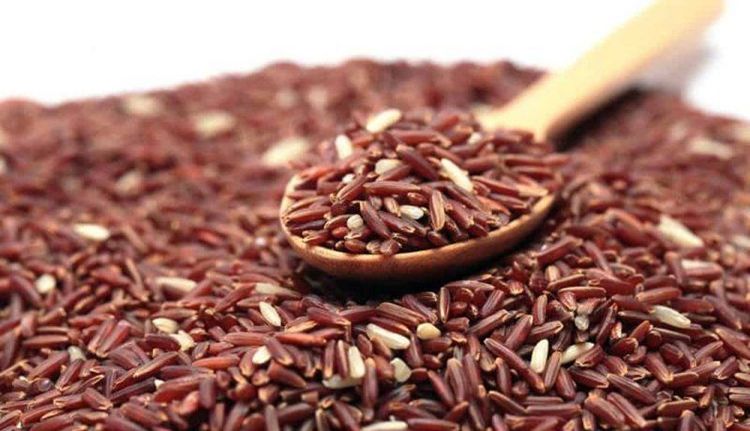
Gạo lứt thường được chỉ định sử dụng cho bệnh nhân mắc tiểu đường
Below is a comparison between the nutrients found in each type of rice. Specifically:
*Nutritional value in white rice:
Calories: 68 Protein: 1.42 g Fat: 0.15 g Carbohydrate: 14.84 g Fiber: 0.2 g Sugar: 0, 03 g Calcium: 5 mg Iron: 0.63 mg Sodium: 1 mg Fatty acids (total saturated): 0.04 g Cholesterol: 0 mg *Nutritional value in brown rice:
Calories: 82 Protein: 1 .83 g Fat: 0.65 g Carbohydrate: 17.05 g Fiber: 1.1 g Sugar: 0.16 g Calcium: 2 mg Iron: 0.37 mg Sodium: 3 mg Fatty Acids (total saturated) : 0.17 g Cholesterol: 0 mg
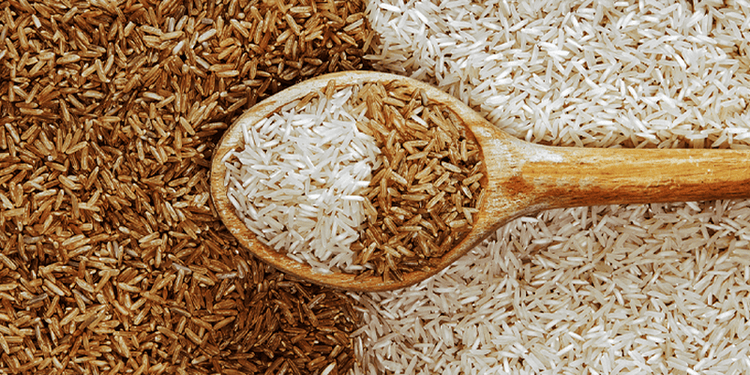
Mỗi loại gạo chứa thành phần dinh dưỡng khác nhau
2. Nutritional difference
Here are some nutritional differences between white rice and brown rice. From there, it helps you have a more objective view of the value of each type of rice, and at the same time make a more appropriate choice.
2.1. Fiber The fiber in brown rice is usually 1-3g more than white rice. In fact, fiber is a nutrient that plays an important role in the digestive system, helping to reduce constipation. Besides, it also brings certain benefits for overall health, including:
The ability to fill up faster, limit cravings, effective support for weight loss Good control of sugar levels blood in the blood, thereby preventing the risk of diabetes Lowering cholesterol levels in the blood Preventing agents that cause cardiovascular disease Is the main source of food to help nourish the beneficial bacteria in the intestines Normally, the amount of fiber The recommendation for men under 50 is 38g/day, and for men 51 years and older is 30g/day. For women, the recommended fiber intake is 25g/day for people under 50 years old and 21g/day for people over 51 years old.
2.2. Selenium Compared with white rice, the amount of selenium present in brown rice is larger. This is a substance that plays an integral role in the production of thyroid hormones, helps improve immune system health and is an antioxidant. In addition, the combination of selenium and vitamin E has a great effect, helping to protect the body's cells from cancer.
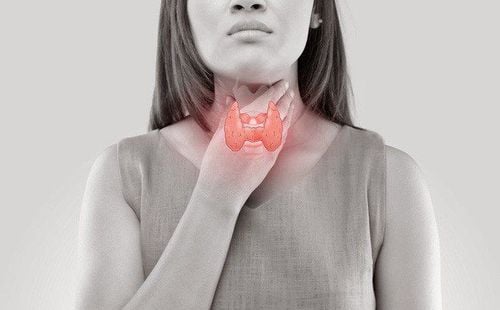
Selenium trong gạo lứt có vai trò quan trọng trong sản xuất hormone tuyến giáp
2.3. Manganese In the list of important nutrients for the body, we cannot fail to mention manganese - an essential mineral, involved in the production of energy and has excellent antioxidant capacity. Brown rice is a good source of this mineral, while white rice is deficient in manganese.
2.4. Magnesium Unlike white rice, brown rice is also rich in magnesium. The average serving of cooked brown rice (1⁄2 cups) can meet about 11% of the recommended daily magnesium intake.
According to researchers, a number of important functions of the body require a certain amount of magnesium to work effectively, including:
Blood clotting function Cell production Muscle contraction Bone development Magnesium intake Daily recommendations are determined by age and gender. In particular, pregnant and lactating women are the subjects that need to consume more magnesium. The average adult needs about 270-400 mg of magnesium per day.
2.5. Folate White rice is an excellent source of folate for the body. On average, one cup of white rice contains 195-222 mcg (micrograms) of folate, equivalent to half of the recommended daily requirement.
Folate has a major role in making DNA and some other genetic material. It is also involved in the body's cell division. This is an especially important nutrient for women who are pregnant or planning to become pregnant.
The recommended amount of folate for adults is about 400 mcg, pregnant women is 600 mcg, and breastfeeding women is 500 mcg.

Folate có trong gạo trắng tham gia chính vào quá trình tạo ra DNA
3. Brown rice vs white rice: which is better?
Although brown rice has more nutrients than white rice, we cannot deny the health benefits of white rice. White rice is especially important for the following people:
People with kidney disease: using white rice will be a more suitable choice than brown rice. Pregnancy and breast-feeding: White rice provides a large amount of the mineral folate, which reduces the risk of birth defects, such as premature birth, birth defects, low birth weight, or stillbirth. People with intestinal problems: white rice contains less fiber than brown rice, so it is an ideal food source for people with diarrhea, diverticulitis or after surgery who require a special diet. low in fiber. As for brown rice, this is a suitable option for those who are following a weight loss diet, or those who are bodybuilders.
Thus, depending on the purpose of use, you can consider choosing brown rice or white rice. If choosing is difficult, another simple solution that you can apply is to combine two types of rice together in your daily diet to absorb the nutrients found in both rice. brown and white rice.
Customers can directly go to Vinmec Health system nationwide to visit or contact the hotline here for support.
Articles refer to sources: healthline.com, webmd.com




